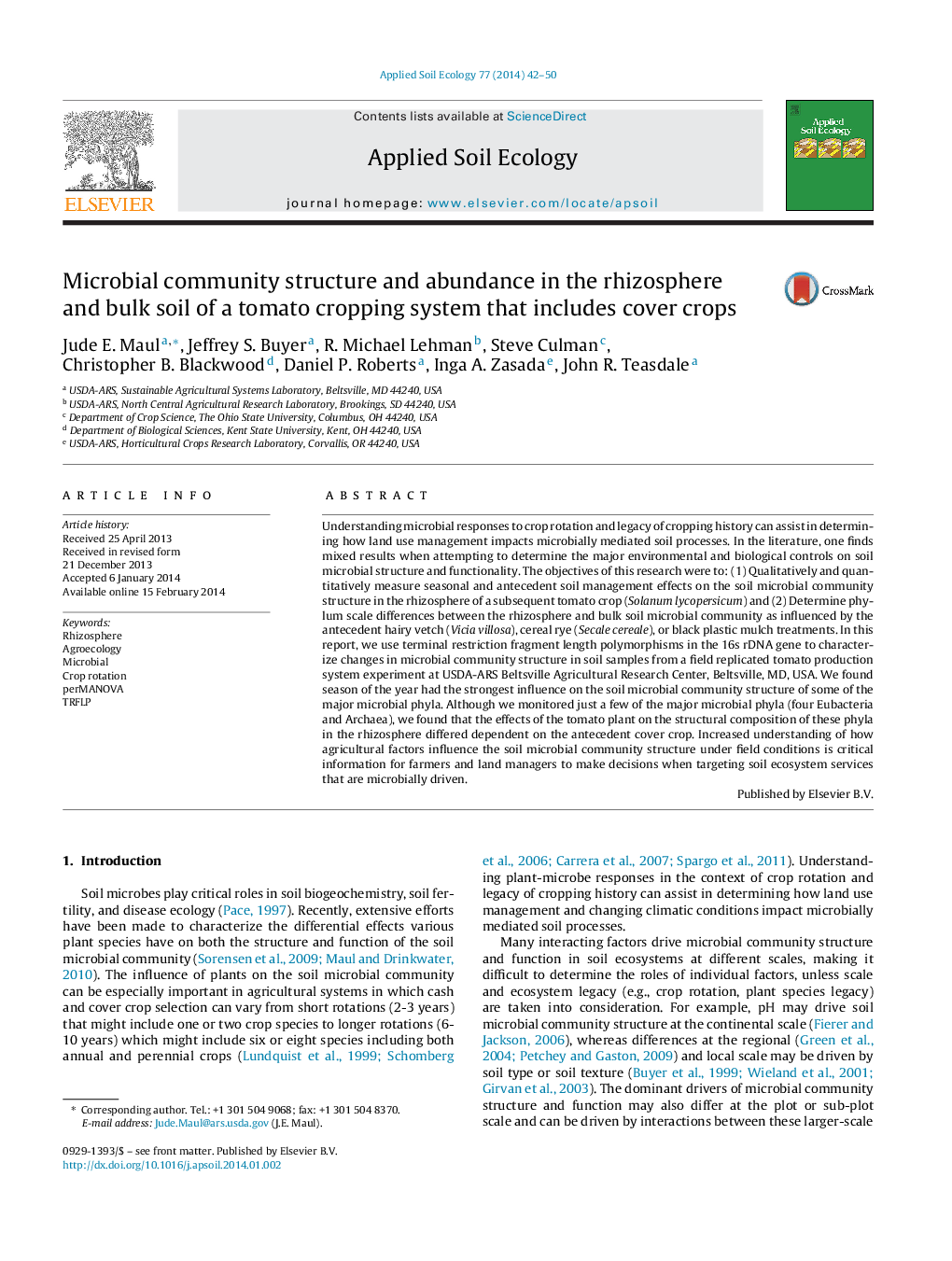| Article ID | Journal | Published Year | Pages | File Type |
|---|---|---|---|---|
| 4382305 | Applied Soil Ecology | 2014 | 9 Pages |
•We assessed soil microbial communities in rotational agroecosystems.•We showed cover crops impact the rhizosphere microbial community of succeeding tomato cash crops.•qPCR revealed hairy vetch increased soil microbial ribosomal gene # over a no cover crop treatment.•Phylum-specific primers were used to target community structure changes among five major phyla.
Understanding microbial responses to crop rotation and legacy of cropping history can assist in determining how land use management impacts microbially mediated soil processes. In the literature, one finds mixed results when attempting to determine the major environmental and biological controls on soil microbial structure and functionality. The objectives of this research were to: (1) Qualitatively and quantitatively measure seasonal and antecedent soil management effects on the soil microbial community structure in the rhizosphere of a subsequent tomato crop (Solanum lycopersicum) and (2) Determine phylum scale differences between the rhizosphere and bulk soil microbial community as influenced by the antecedent hairy vetch (Vicia villosa), cereal rye (Secale cereale), or black plastic mulch treatments. In this report, we use terminal restriction fragment length polymorphisms in the 16s rDNA gene to characterize changes in microbial community structure in soil samples from a field replicated tomato production system experiment at USDA-ARS Beltsville Agricultural Research Center, Beltsville, MD, USA. We found season of the year had the strongest influence on the soil microbial community structure of some of the major microbial phyla. Although we monitored just a few of the major microbial phyla (four Eubacteria and Archaea), we found that the effects of the tomato plant on the structural composition of these phyla in the rhizosphere differed dependent on the antecedent cover crop. Increased understanding of how agricultural factors influence the soil microbial community structure under field conditions is critical information for farmers and land managers to make decisions when targeting soil ecosystem services that are microbially driven.
